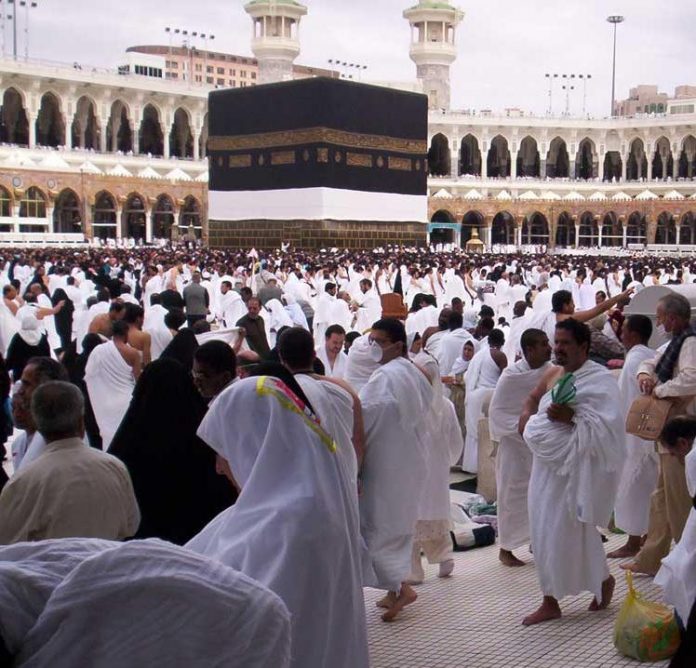By Hassan Hoque for TwoCircles.net
Live feeds, Snapchats and iPhone apps bring the Hajj closer to us all and help us identify with collective events like Arafat.
These technologies help Muslims everywhere connect spiritually with the Hajj, whether we are there physically or not. But I worry that video calls and selfies may reduce the spirituality of the Hajj for the actual Hajjis.
I did Hajj in 2005 before smartphones took over the world. I would love to do Hajj again soon, but I worry that the experience won’t be the same when surrounded by fully-charged iPhones.
I don’t want to sound too old fashioned. After all, technology has always played a role in developing the Hajj pilgrimage. From the Ottoman State launching of the Hijaz Railway in 1908 to the first Hajj travel packages launched by Thomas Cook in the 1880s, transport and logistics technology from the industrial age enabled an increasing number of pilgrims to take part in the annual pilgrimage. This trend continued as flights became more accessible to pilgrims from around the globe, with a record 2.3 million attendees in 2017.
As well as allowing Hajjis to get there, technology is also helping them stay safe and connected once they are there. Wearable bracelets issued by the Saudi government store information about the wearer, which can be invaluable in cases of isolation from a group or after an accident or health incident.
Although this year’s Hajj was largely problem-free, it is understandable that friends and families of pilgrims will want to be kept informed about their loved ones’ whereabouts. For example, if your relative’s location hasn’t changed for several days, or they are not at Muzdalifah when they should be, you will know that something’s not right and can call for help, all whilst providing the exact location of the individual. This is especially important for older Hajjis – many Muslims, for whatever reason, wait until later in life to perform the Pilgrimage.
All this is a huge improvement over the past when those back home would have to wait for infrequent (and often expensive) phone calls at odd hours of the day to get updates on their relative’s journey. Mobile phone apps such as Arab News’ Hajj App have been designed with both pilgrims and those at home in mind. As well as providing location information, they also give the pilgrim the latest Hajj news ensuring that they are kept safe and well informed.
As well as practical uses for connecting Muslims around the globe, social media can serve a very important dawah purpose in showing non-Muslims (who let’s remember, are not allowed into Mecca) the beauty and harmony of the Hajj.
I still remember how many non-Muslim friends had their eyes opened to the peaceful tranquillity of Islam when Snapchat ran a story on Mecca_Live – this was driven by simply seeing footage of worshippers expressing who they are and why they were there.
Aside from social media, in the more traditional digital space, Hajj officials have created portals for pilgrims to inform themselves before starting their journey. SaudiWelcomesTheWorld.org and Hajj2017.org emulate the experience of would be pilgrims.
But the relationship between technology and the Hajj is not without its problems. I try to remember that whatever happens to its outward form, in spite of the luxury flights, glitzy hotels, and media spectacles, Hajj is about spiritual discipline.
It is founded on a deep religious symbolism and devotion to God that can be difficult to maintain when it is subsumed into a social media frenzy. We would not take a selfie during salah, so why do it during Hajj?
The core experience of Hajj depends upon pilgrims stripping away their material possessions, distractions in the way of the central relationship between a Muslim and the divine. The constant talking on phones in the Kaaba, or non-stop buzzing and ringing of phones work to pull other hajjis out of the experience, compromising the spirituality of the journey. Technology in Hajj does work to share the experience with the few, but it impedes the spiritual experience for the many.
Can Hajjis embrace technology in a way that can enhance the Hajj experience, without losing their souls – and the soul of the pilgrimage itself – in the process? I hope so.
The author is the CEO of tech company Key2CRM and the Executive Director of Think tank called Forum For Change.


